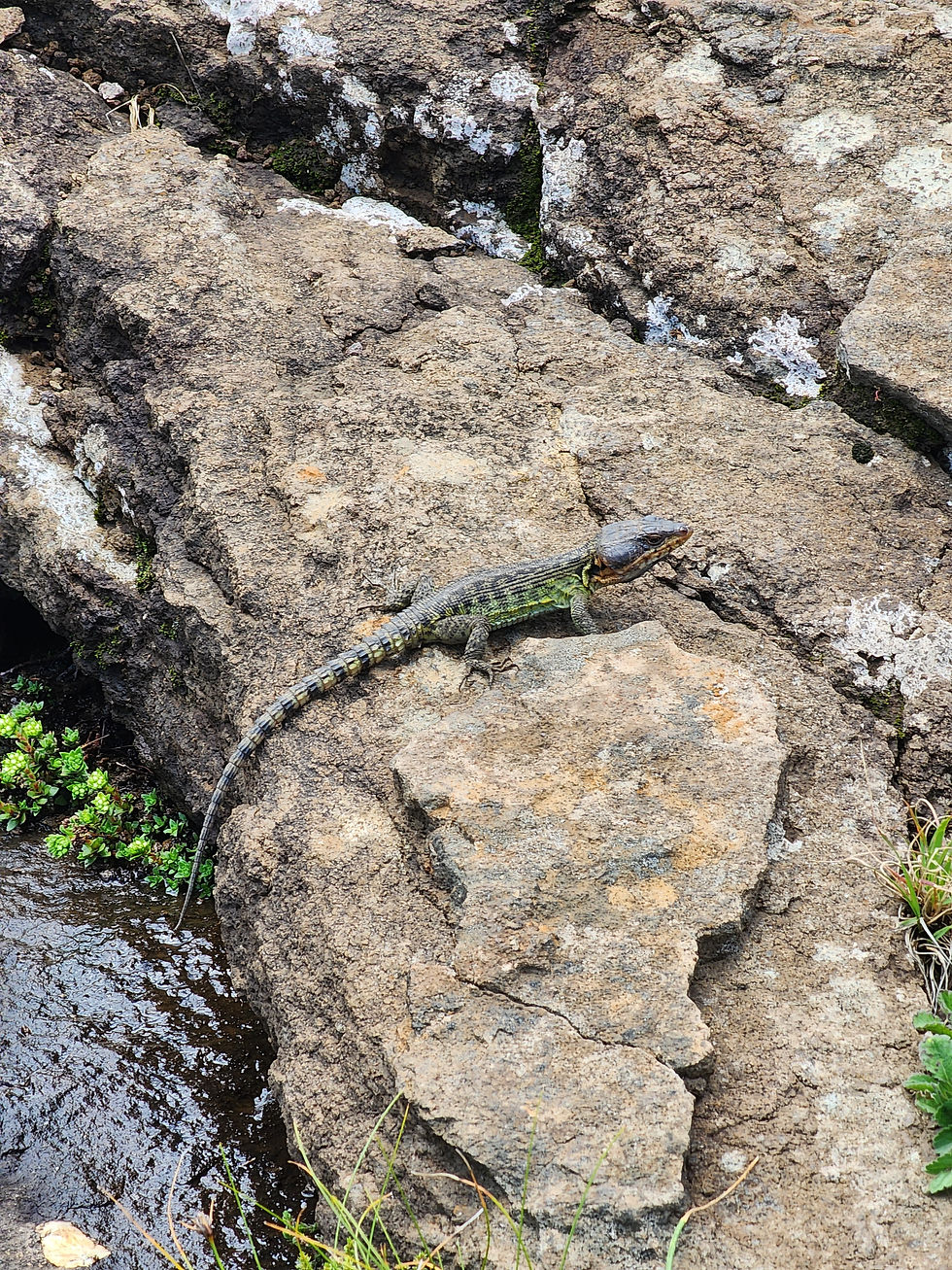Exploring the Crag Lizard
In the rugged terrains of Southern Africa, where the landscape is as diverse as the life it cradles, one creature stands out for its remarkable adaptability and intriguing behaviors - the Crag Lizard (Pseudocordylus), compromising of 6 different sub - species.
This ovoviviparous reptile, thriving in the chilly nooks of rocky outcrops, hills, and mountains, has woven itself into the fabric of the region's natural history.
Today, let's embark on a journey to uncover the secrets of this elusive Lizard, whose existence offers a window into the delicate balance of our planet's ecosystems.

A Hardy Survivor in a Harsh Landscape
The Crag Lizard is a testament to nature's resilience, tolerating temperatures dipping as low as -5 °C, it is found across Southern Africa's varied landscapes.
From the inland mountains of the Eastern Cape and Cape Fold Mountains to the Natal Drakensberg foothills, and extending its reach to the highlands of Lesotho and Swaziland.
An isolated population at Suikerbosrand further showcases its adaptability, proving that life, even in the most challenging conditions, finds a way.
A Surprising Pollinator
While it's not unheard of for Lizards to visit flowers, such interactions are a rarity and seldom play a significant role in pollination.
Thus, the discovery of the Drakensberg Crag Lizard's pivotal role in pollinating South Africa's "Hidden Flower", Guthriea capensis, marks a groundbreaking revelation.
In the high altitudes where these flowers bloom, motion - activated cameras have captured the shy reptiles feeding on the nectar and inadvertently carrying pollen on their snouts.
This relationship is a marvel of evolution, highlighting the unique adaptations of both flora and fauna to sustain life in remote regions.
The Life of the Crag Lizard
Within the populations of the Crag Lizard, an astonishing variety of colors and sizes can be observed, particularly among adult males.
These Lizards exhibit three distinct color phases, each as vibrant as the next, with no significant differences in behavior or reproductive activity among them.
The bright colors and developed epidermal glands signal sexual maturity, drawing a fascinating picture of their life cycle and mating strategies.
Sexual dimorphism is pronounced in these creatures, with males not only showcasing brighter colors but also larger body and head sizes compared to females.
This difference, particularly noticeable in head size, stems from both a decrease in female head size from juvenile to adult and an increase in males, hinting at the intricate dance of sexual selection and territorial polygyny that defines their social structure.
Altitudinal variations in this dimorphism suggest that environmental factors, possibly related to energy allocation, influence their physical development and behavior.

Conservation
The study of the Crag Lizard and its environment offers invaluable insights into the complexity of ecological systems and the interdependence of species.
As we delve deeper into their world, we uncover not just the marvels of evolution but also the urgent need for conservation efforts to protect these unique creatures and their habitats.
In a world that's rapidly changing, ensuring the survival of species like the Crag Lizard is crucial for maintaining biodiversity and the health of our planet.
Conclusion
As nature enthusiasts and guardians of the Earth, we are reminded of the importance of preserving these natural wonders.
Through continued research, conservation, and a deeper appreciation for the natural world, we can ensure that the Crag Lizard, along with the myriad other species that share our planet, continue to thrive for generations to come.
About The Author
Kyle Grobler is a passionate environmentalist and esteemed field guide from Potchefstroom. With an unparalleled love for nature, he boasts a vast collection of over 40,000 photos, illustrating his particular affinity for birds.
Known by many as the embodiment of a true bushman, Kyle has ventured through various South African game reserves and frequently explores the Vaal River's hidden treasures. As a new contributor to the Potch Gazette's environmental page, readers can anticipate immersive tales of Potchefstroom's natural wonders through Kyle's expert lens.
To see more from Kyle and his bush experiences you can also view his Youtube Channel here: Kyle Grobler Photography
More Reptile Stories
For more articles about reptiles you can click on the links below, there are so many great reptiles living amongst us to discover and learn about as they play a major role in nature as we see it today.
World Reptile Day 2023: Click Here
African Rock Python and Impala: Click Here
Monitor Lizards: Click Here
Leopard Tortoise: Click Here
Blue Headed Tree Agama: Click Here
Puffadder: Click Here
Serrated Hinged Terrapin: Click Here
Brown House Snake: Click Here
Spotted Bush Snake: Click Here
Setaro's Dwarf Chameleon: Click Here
Flap - Neck Chameleon: Click Here
Twig Snake: Click Here
Comments, Suggestions, Stories
Please do feel free to add any comments in our comments section below, we always love to hear about animals and experiences from our readers.



.jpeg)
